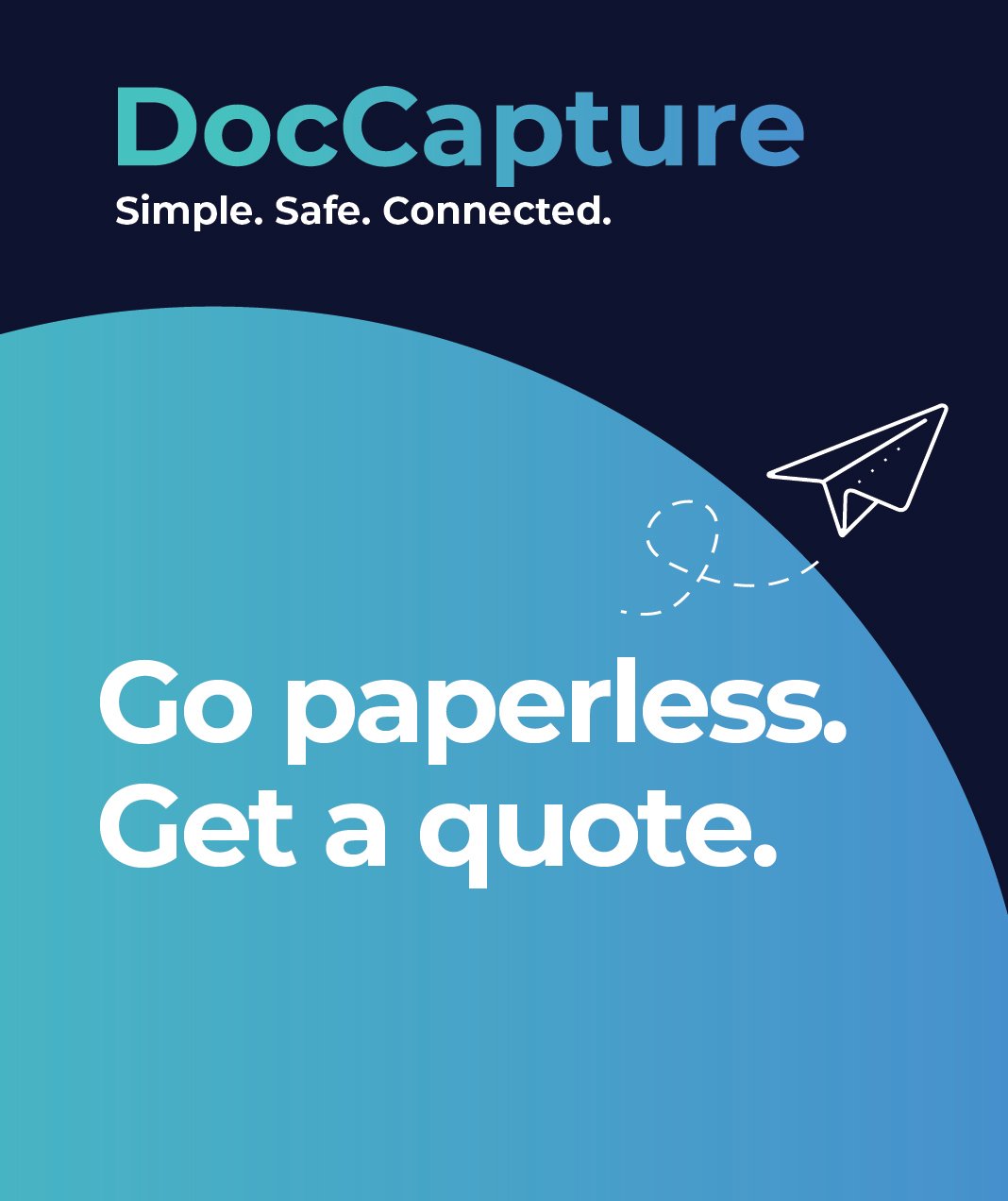Bridging the Gap: How HR Can Leverage Technology for Better Management
Table of contents
Human Resources is undergoing a seismic shift. Once seen primarily as a support function, today’s HR departments are strategic powerhouses tasked with finding, hiring, and retaining top talent—all while ensuring compliance in an increasingly complex regulatory environment. At the heart of this evolution lies HR technology, transforming everything from recruitment pipelines to performance evaluations.
As talent acquisition and management grow more data- and document-driven, the need for streamlined processes becomes critical. HR professionals are juggling mountains of paperwork—resumes, interview notes, performance reviews, compliance documents—making efficient document management not just a nice-to-have, but a necessity. Yet many HR teams, particularly in large organizations and public sector institutions like school boards, are still grappling with outdated, fragmented document systems that slow them down and open them to risk.
This is where digital document management comes in, seamlessly integrating with HR technology to enhance efficiency, boost compliance, and support smarter talent decisions.
The Link Between Document Management and Talent Management
From the moment a candidate enters the talent pipeline to their final performance review years down the line, HR departments handle a staggering volume of documents. Resumes, background checks, offer letters, onboarding paperwork, training certifications, benefits enrollment forms, and performance evaluations—every stage of the employee lifecycle is document-heavy.
When these files are disorganized, stored in disparate systems, or trapped in paper form, it can seriously hinder hiring speed, collaboration, and decision-making. Consider the delay caused when a hiring manager can't locate a candidate's reference check or when compliance audits are held up due to missing documentation. These inefficiencies not only cost time—they can cost top talent.
Digital document management provides a centralized, searchable, and secure way to manage every document tied to talent management. Integrated with broader HR technology talent management systems, it ensures the right people have access to the right files at the right time—improving both the quality and speed of talent decisions.
Why Traditional Document Systems Are Holding HR Back
Despite the growing sophistication of HR platforms, many departments are still bogged down by outdated document management systems—or worse, paper-based processes. In environments like school boards or large public institutions, legacy systems are often deeply entrenched, creating serious roadblocks to talent agility.
Paper files and fragmented digital storage—shared drives, email attachments, or unstructured cloud folders—introduce inefficiencies and risks at scale. HR teams waste valuable hours searching for documents, duplicating data entry, or piecing together employee records spread across multiple platforms.
These bottlenecks don’t just frustrate HR staff—they slow down time-to-hire, delay onboarding, and compromise data integrity. Worse, they create blind spots in compliance, leaving organizations vulnerable to penalties or audit failures.
According to the 2023 Guide to HR Document Retention Requirements, improper storage practices can jeopardize your ability to meet legal mandates. Without a unified system, scaling HR operations efficiently—and securely—is virtually impossible.
How Digital Document Management Supports Talent Strategy
For HR teams looking to level up their talent strategy, digital document management offers more than just organization—it becomes a strategic enabler.
Accelerated Access to Talent Data
With a robust digital system in place, resumes, interview notes, offer letters, and performance reviews are instantly searchable and shareable. No more digging through file cabinets or sifting through endless email threads. Faster access means faster hiring decisions.
Streamlined Onboarding and Collaboration
Digital workflows enhance collaboration between recruiters, hiring managers, and HR staff. Tasks like document routing, e-signatures, and compliance tracking become seamless. That translates into smoother onboarding and a more professional candidate experience.
Smarter, Data-Driven Decisions
Centralized document storage allows HR to analyze talent data across the employee lifecycle. Patterns in turnover, training effectiveness, or performance evaluations can inform better decisions and align hiring efforts with long-term organizational goals.
As highlighted in Workflow Software: The Secret Weapon for HR Departments, automated document flows not only save time but also empower HR leaders to act on insights instead of just managing paperwork.
Meeting Compliance and Security Standards
HR departments carry the weighty responsibility of safeguarding sensitive employee information—from Social Security numbers to medical records. In an era of escalating data breaches and tightening privacy laws, paper files and unsecure systems are no longer acceptable.
Digital document management solutions offer built-in protections that help HR teams stay ahead of compliance demands. Role-based access controls, encryption, automated audit trails, and secure cloud storage create a framework that supports data integrity and privacy.
Whether you're managing HIPAA-sensitive health records or adhering to GDPR requirements, a digital-first approach dramatically reduces the risk of non-compliance. And with centralized storage, producing records for audits or legal inquiries becomes a matter of minutes—not days.
DocCapture’s HR Document Scanning services ensure that historical paper records are digitized securely and compliantly, aligning with modern expectations for document retention and access. Additionally, the Digital Transformation in HR resource outlines how going digital is now a necessity, not a luxury.
Overcoming Common Objections
Despite the clear advantages of digital document management, HR leaders often raise a few common concerns—especially when change feels daunting.
Objection 1: “Will it integrate with our existing HR systems?”
Modern digital document solutions are designed with compatibility in mind. Whether you're using an applicant tracking system (ATS), human capital management (HCM) platform, or payroll software, leading providers offer seamless integrations or APIs. This ensures your HR tech stack works together rather than in silos.
Objection 2: “What about the return on investment (ROI)?”
While upfront costs for digitization and implementation exist, the long-term savings are substantial. Think fewer compliance penalties, less time spent on manual tasks, and faster hiring processes. According to Document Scanning Services for HR Departments, going digital also frees up physical office space and reduces printing and storage expenses.
Objection 3: “We don’t have the bandwidth to manage a digital transition.”
The right partner makes all the difference. Companies like DocCapture specialize in helping HR teams transition smoothly—with minimal disruption and maximum support—turning what feels like a burden into a strategic win.
Why Now? The Push Toward Digital HR
HR leaders are under more pressure than ever to do more with less—fewer resources, tighter budgets, and rising expectations. The digital transformation sweeping through HR isn’t just a trend; it’s a necessity for staying competitive and compliant.
The shift to digital document management is a natural extension of broader HR modernization efforts. Whether it's adopting remote hiring practices or automating performance reviews, today’s HR technology ecosystems demand fast, secure, and accessible document workflows.
Public sector institutions like school boards face unique challenges: strict compliance standards, high volumes of employee data, and often limited IT resources. That’s why digitization isn’t just about efficiency—it’s about resilience and scalability. As the article Revamping HR with Digital Transition explains, embracing this shift enables HR teams to better adapt to change and prepare for the workforce of the future.
Still relying on paper or outdated systems? You’re not just behind—you’re at risk. The time to act is now.
Conclusion
In today’s complex HR environment, efficiency, security, and agility are non-negotiable. Talent acquisition and management depend on fast access to accurate, compliant, and well-organized documentation. Relying on outdated or fragmented systems only holds HR back—from slower hiring cycles to increased compliance risk.
Digital document management, especially when integrated with your existing HR technology talent management systems, empowers your team to work smarter, not harder. It streamlines workflows, strengthens data security, and enables better talent decisions through fast, reliable access to critical information.
Whether you're leading HR at a school board or managing compliance in a large enterprise, the message is clear: the time to digitize is now.
Ready to take the next step? Fill out our "Get a Quote" form to learn how DocCapture can help you modernize your HR document processes and drive real talent success.
Share this
You May Also Like
These Related Stories

Improving Employee Record Management with Document Scanning

Mitigating Risks in HR Through Effective Document Management

